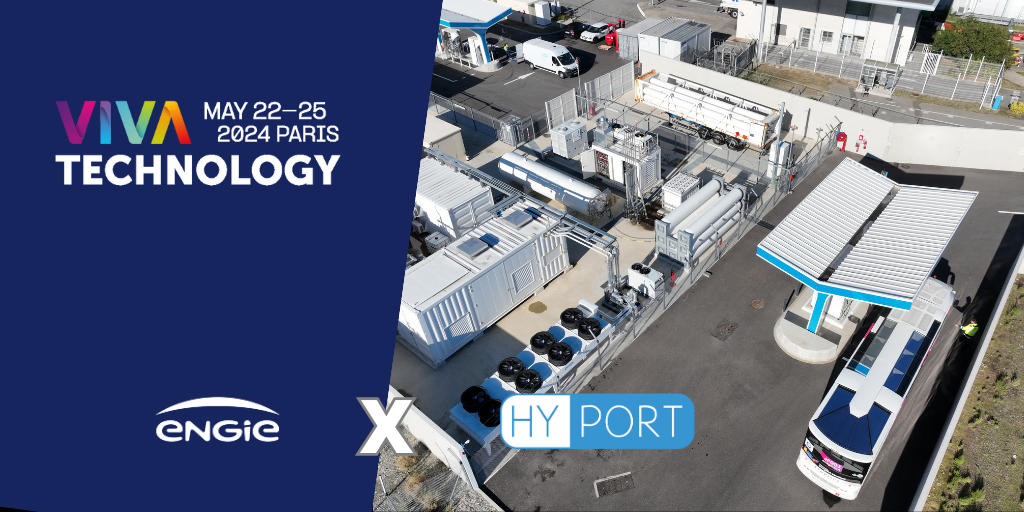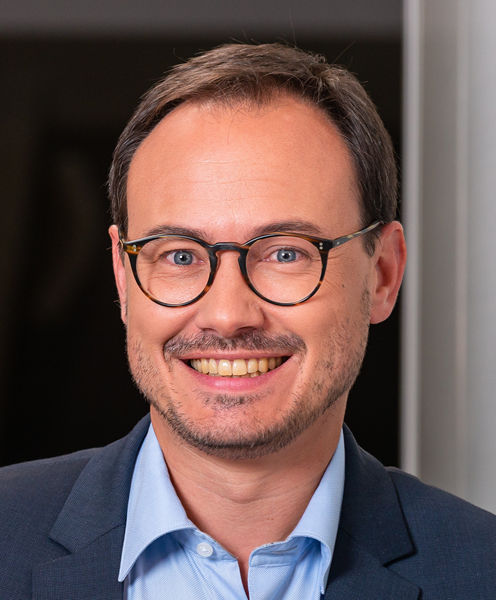


Our next challenge is to expand from the nine hydrogen stations we currently operate in France to around fifty projects by 2030.
It’s an energy source with many uses. Most of its use today is industrial, in processes to produce heat – steelworks, glassworks, crystal factories – or to manufacture fertilisers. Hydrogen is also a very attractive energy source for mobility. This is because the technology allows very short refuelling times, while maintaining a range similar to that of conventional fuel-powered vehicles. These characteristics make it very attractive for heavy mobility – HGVs, site vehicles, refuse collection vehicles – or energy-intensive mobility. And airport shuttles fall squarely into this category.
We’ve known how to produce hydrogen for a very long time. Today, 95% of the hydrogen produced is “grey”, which means it’s produced through thermochemical reactions using fossil fuels (natural gas or coal). What’s new is green hydrogen, produced by electrolysis of water. The electric current splits the water molecules in two, with oxygen on one side and hydrogen on the other. This makes green hydrogen, as long as it’s produced using renewable electricity.
Because we’re convinced that green hydrogen is a source of energy for the future and is essential in tomorrow’s energy mix with the rapid increase in renewable production resources. ENGIE is developing a huge number of renewable energy solutions, such as wind and solar power, and that’s fantastic. But solar has the disadvantage of producing a lot of energy when the sun is shining and not at all at night, and wind turbines generate power only when the wind is blowing: this is known as intermittence. This means the electricity grid will need solutions to ensure system flexibility between generation and consumption. But green hydrogen can be stored. Combined with a renewable electricity generation facility, it can be used to store the electricity produced when it exceeds consumption. It can then be used directly as green gas on demand, or converted back into electricity using a fuel cell. So it’s a highly virtuous source of energy.
HyPort, a company owned by Engie Solutions, a subsidiary of the ENGIE group (51%) and the Agence Régionale Energie et Climat Occitanie (AREC, 49%), is deploying green hydrogen infrastructure in the Occitanie region for mobility, industry and logistics. From production to distribution, its aim is to support local authorities and industries with solutions tailored to their needs. The electrolyser powers the two hydrogen refuelling stations: one in the airport area, for use by vehicles on the tarmac (Transdev buses for passenger transport, aircraft tractors or generators that supply aircraft with electricity when they are on the ground and not connected to a footbridge), and one in a public area accessible to customers outside the airport (including two buses operated by Transdev).
It’s the first operational project of this type in an airport area in Europe. And today, we have other projects under way at other airports.
What made this project possible was the combined determination of the Occitanie Region, which is very active in developing green hydrogen solutions, Toulouse-Blagnac airport, ADEME and ENGIE. The project has also benefited from various types of public funding from ADEME, the Occitanie Region and Europe via the JIVE programme (Joint Initiative for hydrogen Vehicles across Europe).
We’ll be offering a virtual tour of the HyPort station to show what a hydrogen station consists of: the electrolyser section, the compression section and the storage section, bearing in mind that these are areas that are usually closed to the public. This will be an opportunity to educate people, by showing how hydrogen is produced, stored and distributed.
Green hydrogen is a fast-developing and innovative technology. For us, what’s important now is showing that it’s fully operational. We’re no longer in research labs – we’re in a phase of mass production and industrialisation. You can bring your car and refuel with hydrogen – it exists and it works!
The wheel, because by enabling the development of mobility, it laid the foundations for all kinds of exchanges: cultural, commercial, industrial... Before the wheel, people were very limited in their movements and everything was managed at local level. This invention led to the development of all kinds of infrastructure, and therefore to the internationalisation of trade.
We’ll be trying to expand from the nine hydrogen stations we currently operate in France to around fifty projects by 2030. So we’re accelerating very sharply, both in France and across Europe, and we’re also industrialising all our processes and the entire hydrogen value chain. Whether it’s electrolyser suppliers, integrators like us or pure producers, we’re in a massification and industrialisation phase where we need to find the right business models, and that’s what’s exciting.